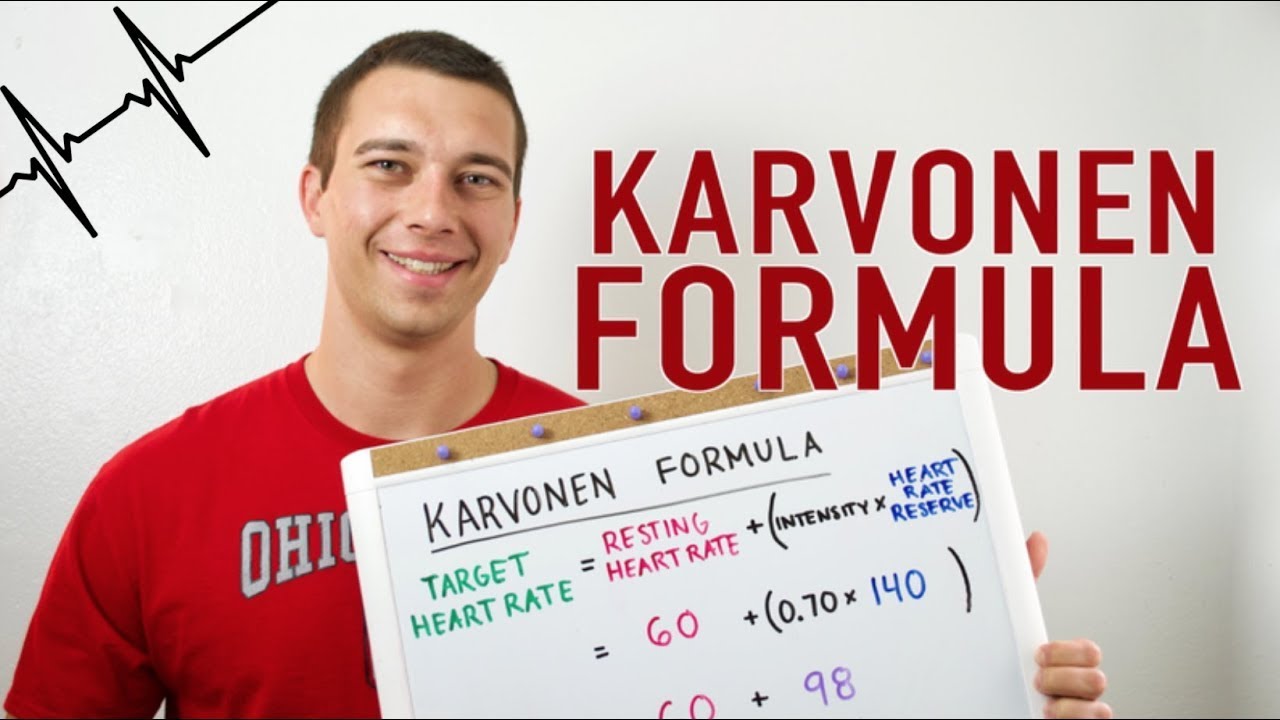The Karvonen Formula is one of the best ways to find your personal heart rate training zones. It helps fitness fans and athletes work out at the right level based on their own heart.
Unlike simpler methods, it uses both top and rest heart rates to make truly personal training levels.
What Is the Karvonen Formula?
The Karvonen Formula calculates target heart rate training zones by incorporating three key variables: maximum heart rate, resting heart rate, and desired training intensity.
This personalized approach produces more precise training zones than basic methods that use only age and maximum heart rate.
The Formula
Target Heart Rate = [(Maximum HR − Resting HR) × %Intensity] + Resting HR
This equation utilizes heart rate reserve (HRR), which represents the difference between your maximum and resting heart rates, and applies a specific training intensity percentage to determine optimal workout heart rate targets.
How to Calculate Your Training Heart Rate
To implement the Karvonen Formula effectively, follow these steps:
1. Determine Your Maximum Heart Rate
Two primary methods exist for establishing your maximum heart rate:
Direct Measurement:
- Complete a supervised maximum effort test
- Perform a field test such as a hill climb to exhaustion
- Record the highest heart rate achieved during intense exercise
Estimation:
- Use the traditional formula: 220 − Age
- Example: For a 25-year-old: 220 − 25 = 195 bpm
While the age-based estimation provides a reasonable starting point, direct measurement yields more accurate results, as maximum heart rates can vary significantly among individuals of the same age.
2. Measure Your Resting Heart Rate
For optimal accuracy:
- Check your pulse immediately upon waking
- Remain lying down and relaxed while counting
- Count beats for 60 seconds
- Take measurements on 3-5 consecutive mornings
- Calculate the average of these measurements
A typical resting heart rate ranges from 60-80 bpm for average adults, though well-conditioned athletes may have resting rates in the 40-50 bpm range.
3. Select Your Training Intensity
Different training goals require different intensity ranges:
- Recovery/Light Activity: 50-60% of HRR
- Moderate Aerobic Training: 60-70% of HRR
- Aerobic Endurance Development: 70-80% of HRR
- Anaerobic Threshold Training: 80-90% of HRR
- Maximum Performance/Intervals: 90-100% of HRR
4. Apply the Formula
Using our 25-year-old example with a resting heart rate of 65 bpm:
For 60% Intensity (Lower End):
- Maximum HR: 220 − 25 = 195 bpm
- Heart Rate Reserve: 195 − 65 = 130 bpm
- Target HR: (130 × 0.60) + 65 = 143 bpm
For 70% Intensity (Upper End):
- Maximum HR: 220 − 25 = 195 bpm
- Heart Rate Reserve: 195 − 65 = 130 bpm
- Target HR: (130 × 0.70) + 65 = 156 bpm
This individual’s moderate aerobic training zone would therefore be 143-156 beats per minute.
Advantages of the Karvonen Method
The Karvonen Formula offers several benefits over simpler approaches:
- Individualization: Accounts for personal resting heart rate, which varies significantly between individuals
- Physiological Relevance: Correlates well with percentage of VO₂ reserve, making it physiologically sound
- Adaptability: Adjusts automatically as fitness improves and resting heart rate decreases
- Precision: Provides more accurate intensity zones than methods using only maximum heart rate
- Versatility: Applicable across different exercise modalities and fitness levels
Practical Application for Different Fitness Goals
Endurance Development
- Target Zone: 70-80% of HRR
- Duration: 30-60 minutes
- Frequency: 2-4 times per week
- Activities: Running, cycling, swimming, rowing
Fat Burning
- Target Zone: 60-70% of HRR
- Duration: 40+ minutes
- Frequency: 3-5 times per week
- Activities: Brisk walking, light jogging, cycling
High-Intensity Interval Training
- Target Zone: 80-90% during work intervals, 50-60% during recovery
- Duration: 20-30 minutes total (including intervals)
- Frequency: 1-3 times per week
- Activities: Sprint intervals, hill repeats, tabata workouts
Recovery Sessions
- Target Zone: 50-60% of HRR
- Duration: 20-40 minutes
- Frequency: As needed between harder workouts
- Activities: Walking, light swimming, gentle cycling
FAQs
How good is the 220-Age formula for max heart rate?
While easy to use, the 220-Age formula gives only a rough guess with big person-to-person changes. Studies show it can be off by 10-12 beats per minute, so your real max heart rate might be quite different.
How often should I redo my training zones?
Check your zones every 8-12 weeks or when your fitness level changes a lot. As your heart gets stronger, your rest heart rate often drops, so you need new zones.
Does the Karvonen Formula work for all types of exercise?
It works for most cardio activities, but may need small tweaks for some. For example, when swimming, heart rates are 5-10 beats lower than running at the same effort due to lying flat and water cooling you down.
What if I take pills that change my heart rate?
Many pills, especially beta-blockers, can really change how your heart works during exercise. If you take these, the normal formulas may not work well. Ask your doctor about other ways or use how hard it feels instead.
Can I use the Karvonen Formula if I don’t know my true max heart rate?
Yes, but it won’t be as exact. Using the age formula gives a start point, but your real zones may need changes based on how hard it feels. If exercise seems much easier or harder than it should for a zone, adjust it.












